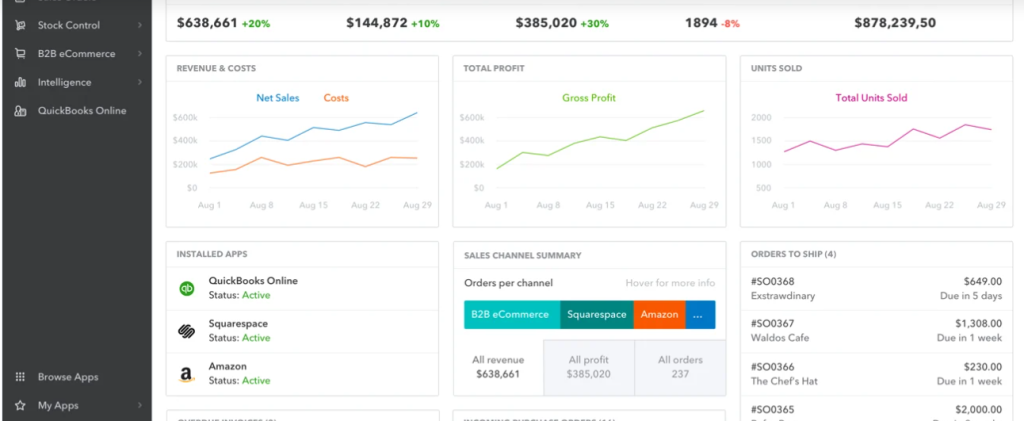Algorithmic Trading in Indian Online Apparel Stores
In the world of e-commerce, remaining competitive requires more than simply a great product; it also requires a smart strategy. Algorithmic Trading in Indian Online Apparel Stores has evolved as a potent e-commerce success tool. In this blog, we will go into the details of algorithmic trading, looking at techniques, tools to help your online business get a competitive advantage.
If you are a Cycle Enthusiast Select the hyperlink, to know more about the Scalping in Cycling Industry
lets see the Algorithmic Trading in Indian Online Apparel Stores in detail below
What Is Algorithmic Trading?
Algorithmic trading, often known as algo trading, is an advanced approach to financial markets that use automated trading algorithms. These systems carry out buy and sell orders for investors based on established rules and algorithms.
Algorithmic Trading in Indian Online Apparel Stores
Algorithmic trading in online clothing retailers marks an important change in the Ecommerce environment, bringing in a new era of possibility and efficiency. These advanced techniques have smoothly blended into the fabric of internet retail, powered by proven algorithms. They allow organizations to keep ahead of the competition in an ever-changing industry.
Example Scenarios:
For instance, Lets consider a scenario where an online clothing retailer wants to stay competitive in a constantly changing fashion market. Algorithmic trading allows retailers to monitor the competitors pricing strategies, analyze customer purchasing patterns, and adjust their prices in real-time. By doing so, they can maintain a dynamic pricing approach, ensuring their products are not only competitively priced but also tailored to market demand.
Online clothing retailers use algorithmic trading to stay competitive by monitoring rivals’ pricing, analyzing customer behavior, and adjusting prices in real-time. This dynamic pricing approach attracts more customers, increases sales, and profits, making it essential for e-commerce businesses in a fast-changing digital marketplace
The Pivotal Role in Streamlining Indian Online Apparel Stores
The significance of algorithmic trading cannot be highlighted in the fast-paced world of online clothes shopping are crucial.
- It helps organizations to keep inventory levels at ideal levels, avoiding the danger of overstocking or understocking which improves operating efficiency and lowers storage expenses.
- It helps organizations to tailor the purchasing experience.
- Ecommerce platforms may offer items personalized to specific customers by evaluating user data and interests. This customization leads to enhanced consumer satisfaction and sales.
Let’s look at the importance of algorithmic trading using real-world examples and visualizations.
The Importance of Algorithmic Trading in Indian Online Apparel Stores
Optimized Pricing Strategies:

Imagine I am looking for a new pair of jeans on my favorite online clothing retailers (Like Myntra, Ajio,etc). I notice the pricing change right in front of your eyes. This is an example of algorithmic trading in action. Online clothing retailers use algorithms to evaluate market trends, rival pricing, and customer behavior in real time. Prices can be adjusted in real time thanks to these algorithms
Example
For example, when demand for a specific style increases, the algorithm might boost the price slightly to maximize income. It can, on the other hand, cut prices during off-peak hours to attract more customers. This dynamic pricing method guarantees that items are not only competitively priced, but also appropriately priced for current market circumstances.

Efficient Inventory Management

One of the most critical issues in online garment selling is inventory management. Overstocking and understocking can both result in financial losses. Algorithmic trading helps to keep inventory levels at optimal levels. These algorithms take into account sales trends, seasonal fluctuations, and external elements like weather forecasts.
Example
For example, As winter approaches, an algorithm will propose stocking up on cold-weather gear and stocking down on summer products. This guarantees that clients get what they need when they need it, lowering storage costs and waste.
Personalized Shopping Experience

The future of internet purchasing is customized services, and algorithms are driving this trend. To deliver individualized product suggestions, algorithms explore user behavior, previous purchases, and browsing history.
For Instance, When we see “Recommended for You” goods on our screen, we are influenced by algorithmic trading. These individualized recommendations improve the client experience, resulting in greater satisfaction and sales.
Top 5 Real time example with Algorithmic trading in Indian Online Apparel Store
Here are five real-time examples of how these businesses leverage algorithmic trading:
- Dynamic Pricing: Many online clothing companies use algorithms to modify pricing in real time based on the factors like demand, competition and inventory. During sales event, the algorithm continually adjust pricing to remain competitive and attract more consumers.
- Inventory Management: Algorithms forecast client demand and seasonality. Ensuring popular goods remain in stock in real time while reducing superfluous inventory.
- Personalized Recommendations: Apparently ,Real-time algorithms analyze browsing and buying history, boosting sales with tailored product suggestions..
- Flash Sales and Promotions: For flash sales and promotions, algorithms are used to identify the ideal time and pricing. They examine historical data as well as current market conditions to guarantee that these events are lucrative as well as appealing to clients.
- Marketplace Competition: Lastly, Online clothing companies use algorithms to stay competitive, analyzing rival prices and adjusting their strategy in real-time.
Top 5 Algorithmic Trading Tools for Indian Online Apparel Stores
| Tools | Description | URL Link |
| Repricer Express | Firstly, A dynamic pricing tool that automates price adjustments in real-time, ensuring online apparel stores stay competitive and maximize profits. | https://www.repricerexpress.com/ |
| Trade Gecko | An inventory management solution that uses algorithms to optimize stock levels, reduce storage costs, moreover it automate restocking processes for apparel retailers. | https://www.tradegecko.com/ |
| Dynamic Yield | A personalization platform that employs algorithms to deliver highly targeted product recommendations, enhancing the customer experience and boosting sales | https://www.dynamicyield.com/ |
| Prisync | A competitor price tracking and optimization tool that helps online apparel stores monitor market prices, adjust their pricing strategy, and maintain competitiveness | https://prisync.com/ |
| BlackCurve | A pricing optimization and management tool that uses algorithms to determine the most effective pricing strategies for online apparel stores, ensuring profitability and competitiveness | https://www.blackcurve.com/ |
Note: These algorithmic trading tools are invaluable for online apparel stores looking to optimize pricing, inventory management, personalization, and competitiveness in the Ecommerce market.
Pros and Cons of Algorithm Trading in Indian Online Apparel Stores
Pros of Algorithm Trading in Indian Online Apparel Stores:
- Dynamic Pricing: Firstly, in the realm of dynamic pricing, algorithms constantly adjust online clothing business prices in real-time, enhancing competition and driving up sales and profitability.
- Inventory Optimization: Additionally, for inventory optimization, algorithms predict demand and seasonality, enabling retailers to maintain suitable inventory levels, reduce storage costs, and minimize waste.
- Personalized Shopping Experience: Furthermore, algorithms deliver individualized product suggestions, boosting client pleasure, engagement, and sales.
- Marketplace Competitiveness: Algorithms are used by online clothing companies to monitor and react to rival prices in real time, ensuring that they remain competitive.
- Efficient Flash Sales and Promotions: Algorithms assist in determining the best timing and price for promotions and flash sales in order to maximize revenue and consumer attraction.
Cons of Algorithm Trading in Indian Online Apparel Stores:
- Data Security: Obviously, Managing vast client data and sensitive pricing info can raise concerns about security and data breaches
- Algorithmic Biases: Secondly, Algorithms can develop biases, risking unfair pricing with legal and ethical consequences..
- Market Volatility: Thirdly, Algorithmic trading may heighten market volatility, causing abrupt price swings and substantial losses for online clothing retailers
- Over-Reliance on Technology: Moreover, excessive on algorithms may result in a lack of human oversight, leaving the firm open to unexpected conditions and risks.
- Implementation Costs: Lastly, upkeep of algorithmic systems may be costly, needing both financial resources and skill.
Conclusion
Finally, Algorithmic trading has marked in a new era for online apparel retailers, providing dynamic pricing, improved inventory management, and personalized consumer experiences. However, to fully capitalize on these advantages, online clothing merchants must effectively address potential challenges related to data security, biases, and market volatility. Those who master algorithm usage will stay competitive, responsive, and ready for success in the dynamic world of Ecommerce